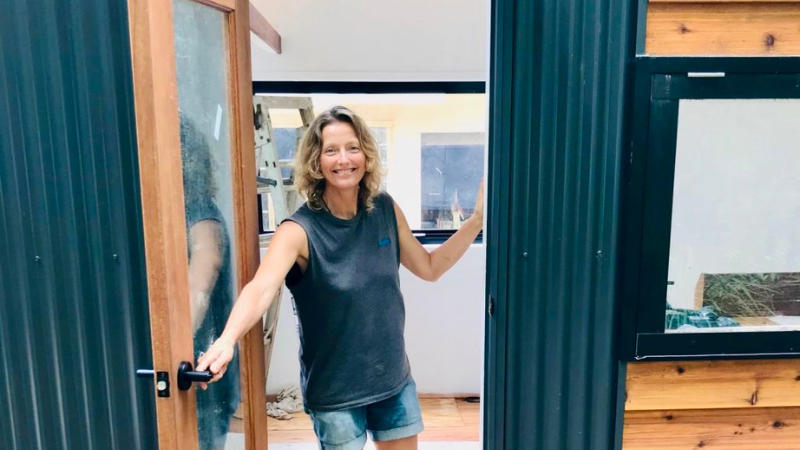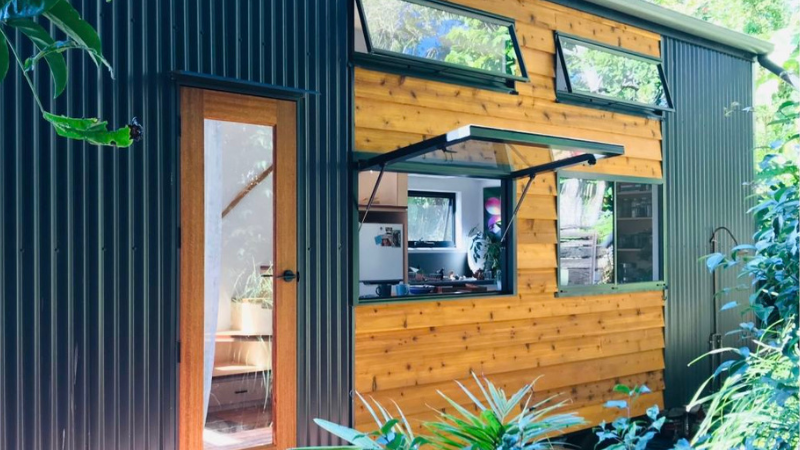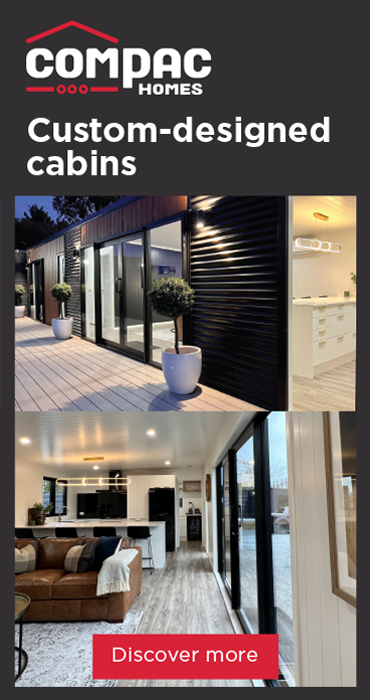At 50, with homeownership seemingly out of reach and a burgeoning housing crisis sweeping across Australia, Louise found herself yearning for more than just a place to live. She craved a sanctuary, a space that felt truly her own. That quest led her to a radical and liberating decision: building a tiny house on wheels.
For years, Louise’s idea of home had been shaped more by her travels than by traditional housing. She had found comfort in compact spaces that offered a sense of safety and simplicity, from snug cabins on ships to small, tranquil hotel rooms. Living in a studio apartment in a seaside village near Byron Bay, she relished the area’s lush greenery and relaxed pace. Yet, like many Australians, she felt the pinch of escalating rents and an uncertain future as regional areas became less affordable.
Turning 50 was a pivotal moment. After decades of navigating life’s uncertainties, Louise began to long for stability. The idea of a tiny house first appeared as a faint glimmer of possibility, a solution that combined financial accessibility with environmental consciousness. Tiny houses, often built on trailers, offered a chance to own a home without the crushing weight of a mortgage. For Louise, it was also about reclaiming the art of homemaking and living with intention.
"The more I learned about tiny houses, the more they made sense to me," Louise recalls. She admired their minimalist ethos, sustainable design, and adaptability. A tiny house on wheels wouldn’t require land clearing or hefty building materials. It offered mobility, reduced environmental impact, and encouraged a simpler lifestyle.
Historically, humans have thrived in small, intimate dwellings. Long before sprawling suburbs and mega-mansions, our ancestors lived in huts, yurts, and cottages made from natural materials. For Louise, tiny houses represented a return to this way of living, a life more connected to nature and less cluttered by material possessions.
Yet, the path to creating her dream home was anything but straightforward. Without land or significant savings, Louise had to get creative. She drew inspiration from pioneers of the tiny house movement, like Fred Schultz, who championed the idea of reclaiming shelter-making. “The tiny house movement is about putting the hammer back in people’s hands,” Schultz once said. This ethos resonated deeply with Louise, who took a hands-on approach to designing her home.
Because tiny houses on wheels are classified as vehicles rather than buildings in Australia, they fall outside the scope of the national building code. This regulatory loophole meant Louise could design her house without the need for official approvals, giving her the freedom to craft a home that perfectly suited her needs.
She began by envisioning how she lived her life and what was truly important to her. Living in a studio apartment had taught her to appreciate natural light, efficient layouts, and multi-functional spaces. Her wishlist for the tiny house included a dedicated workspace, ample storage for her surfboards and books, and a comfortable space to host friends. She also prioritized sustainability, planning for solar panels, a rainwater tank, and a composting toilet.
Designing her tiny house became a deeply personal journey. Louise took an online course led by tiny house architect Macy Miller, who encouraged participants to focus not just on the physical aspects of a home but also on how they wanted to feel living in it. For Louise, this meant creating a space that was serene, filled with natural light, and connected to the outdoors. Her design featured a long kitchen bench that doubled as a dining table, stairs with built-in storage leading to a loft bed, and plenty of windows to frame views of the surrounding trees and sky.
The challenges of downsizing were real but liberating. Louise had to pare down her belongings to fit within 25 square meters, including two lofts. This process of letting go became a form of self-discovery. “When you live in a tiny house, every item has to earn its place,” she says. “It’s about choosing quality over quantity and keeping only what truly matters.”
Construction began with a standard 7.2-meter trailer as the foundation. Louise sourced sustainable materials and kept costs low by incorporating recycled and repurposed elements. Her home’s design was simple yet elegant: a contemporary cabin with white interiors and timber accents. Outside, she added a deck and an outdoor shower to extend her living space and connect with nature.
Building the house was a team effort. Louise enlisted the help of friends, local craftspeople, and tiny house enthusiasts. The process wasn’t without setbacks, from unexpected weather delays to the steep learning curve of DIY construction. But with each challenge came a sense of accomplishment. “Every nail I hammered and every board I placed brought me closer to my dream,” she reflects.
Living in the tiny house has transformed Louise’s relationship with home. Nestled in a tranquil setting, surrounded by trees and the sounds of nature, her tiny house has become a sanctuary. The minimalist lifestyle it fosters has allowed her to focus on what truly matters: her work, her well-being, and her connection to the environment.
Perhaps most importantly, the tiny house represents freedom. Free from the pressures of rent or mortgage payments, Louise has found financial stability and peace of mind. The mobility of her home means she can adapt to life’s changes without being tied to one location. And the act of building her own shelter has given her a profound sense of empowerment.
For Louise, the journey to tiny house living wasn’t just about creating a physical space. It was about redefining what it means to have a home and crafting a life aligned with her values. “A tiny house isn’t just a place to live,” she says. “It’s a statement about how I want to live.”
In a world where housing is increasingly unaffordable and environmental concerns loom large, Louise’s story is a testament to the power of thinking small. Her tiny house may only be 25 square meters, but it has given her a life that feels boundless. And in that small, self-made sanctuary, Louise has found something that had eluded her for years: a place to truly call home.
To explore Louise’s full story and dive deeper into her journey, check out her book Tiny - A Memoir about love, letting go and a very small house. It’s an inspiring read for anyone curious about the tiny house movement or looking to rethink their relationship with home and the environment.



